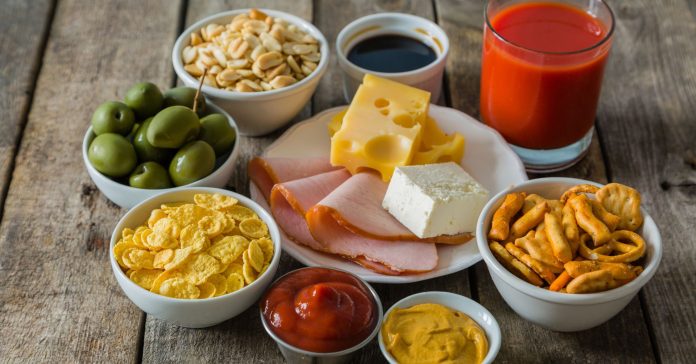Salt—or more precisely, sodium—is vital for health in moderation. It helps regulate fluid balance, nerve impulse transmission, and muscle function. But most people consume far more than the recommended daily amount of around 2 grams (about 5 g of salt), especially in Singapore where processed foods and sauces are widespread in diets.
Processed and packaged foods often contain sodium hidden under various names like sodium chloride, sodium citrate, monosodium glutamate (MSG), sodium nitrate, and more. Below are 13 surprising culprits that may be adding more salt to your meals than you expected.
1. Cottage Cheese
A half‑cup can contain around 400 mg sodium, even in low-fat versions. In contrast, Greek yogurt delivers far less—around 70 mg per half‑cup.
2. Instant Oatmeal / Instant Porridge
Convenient but often loaded with ~200 mg sodium per serving, while plain oats have virtually none. Choose rolled oats and top them yourself instead.
3. Sports Drinks
Marketed for hydration, these beverages often contain sodium in each bottle—typically unnecessary unless you’re sweating heavily during long workouts.
4. Veggie Burgers / Meat Substitutes
To simulate flavour and texture, many include high sodium levels—sometimes equaling or exceeding those in conventional meat burgers.
5. Biscuits, Cookies & Baked “Healthy” Treats
Sweet snacks may surprise you—they often contain sodium comparable to savoury items, especially packaged or branded “diet” versions.
6. Canned Vegetables & Beans
Salt is used as a preservative. A cup can contain ~720 mg sodium—draining and rinsing can cut sodium by about 30–40%.
7. Canned Soup & Broth
Convenient, yes—but one cup often supplies 800–1,100 mg sodium (30–35% Daily Value). The full can can double that count.
8. Frozen Meals / Mac & Cheese Boxes
Frozen or boxed dinners—including mac & cheese—can contain 20–35% of your daily sodium per serving or more, thanks to preservatives.
9. Processed Meats: Bacon, Sausages, Deli Cuts
Cured meats contain 600–1,100 mg sodium per serving. A single slice of bacon can account for ~25% of your Daily Value.
10. Smoked or Cured Fish (e.g. Smoked Salmon, Clams)
A small portion of smoked salmon or shellfish like clams can deliver 500–660 mg sodium (20–24% Daily Value).
11. Vegetable Juice / Drink Blends
Pre-bottled juices such as V8 may contain ~640 mg sodium per cup. Opt for low-sodium options or homemade blends if possible.
12. Sauces & Seasonings: Teriyaki, Soy Sauce, Bouillon
Even two tablespoons of teriyaki sauce can provide 640 mg sodium (~27% Daily Value), with soy sauce and broths similarly high in salt content.
13. Jerky & Snack Meats
High-protein but also highly salted—a single ounce of jerky can pack 600–700 mg sodium (25–30% Daily Value).
Why It Matters: Health Impacts of Excess Sodium
While sodium supports essential functions, consuming too much can increase blood pressure, elevate cardiovascular disease risk, and contribute to heart and kidney issues.
In Southeast Asia—including Singapore—processed foods combined with high-sodium cooking practices mean many adults regularly consume twice the WHO-recommended levels (i.e. >2,000 mg sodium/day).
How to Cut Your Sodium Without Sacrificing Flavour
- Choose fresh or frozen vegetables over canned varieties; when using canned, always drain and rinse.
- Cook from scratch using whole ingredients. Limit sauces and seasonings in bottled or packet form.
- Read labels: look for reduced- or no-sodium versions, and beware of hidden names like sodium nitrate, phosphate, MSG, etc.
- Use herbs, spices, citrus, and vinegars (like basil, cilantro, lemon pepper) to enhance flavour without salt.
- Salt late: taste before you salt. Often, less salt is needed if added at the end of cooking.
Final Thoughts
Many everyday foods—often branded as “healthy” or convenient—can covertly contain large doses of sodium. Monitoring your intake requires awareness and sometimes substitutions, but the long-term benefits for heart and kidney health are well worth the effort.
By emphasising fresh foods, reading labels, and flavouring with herbs instead of salt, you can easily reduce your sodium load without sacrificing taste. Ready to start? Take a look at your pantry: Which of these 13 foods might be sneaking more sodium into your diet?


